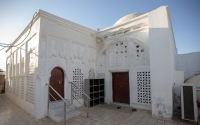
Al Najdi Mosque is one of the historical mosques in Jazan province of the Kingdom of Saudi Arabia. It is located on Farasan Island and is considered an architectural heritage built in the Andalusian style. The mosque was constructed by the pearl merchant Ibrahim al-Najdi al-Tamimi when he came from Hawtat Bani Tamim to Jazan to teach the Quran in 1928. The mosque is one of the prominent mosques in Jazan and is included in the project of Prince Mohammed bin Salman to develop historical mosques ....
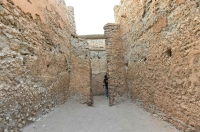
Antiquities in the Eastern Province refer to the tangible remnants and legacies of ancient human civilizations in the Eastern Province of the Kingdom of Saudi Arabia. It includes the antiquities of Thaj Archaeological Town , a significant archaeological site east of the Kingdom, and one of the historical Arab kingdoms that dates back to the pre-Islamic era. The Jawatha Mosque in al-Ahsa Governorate dates back to the early Islamic era, as it was built in 628. To the mosque's southwest are t...
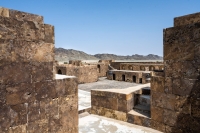
The Ruins of Duba Valley are significant archaeological sites situated within the administrative borders of Duba Governorate , part of Tabuk Province in the northwest of the Kingdom of Saudi Arabia, along the Red Sea coast. Duba's geographical importance emerged during the late Ottoman era with the construction of a small fortress to safeguard trade between Duba and the Egyptian ports. Duba Valley location Located 190 km west of Tabuk City , Duba Valley served as a crucial stop on the coas...
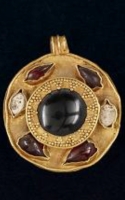
The Ain Jawan Archaeological Site is located in the Eastern Province of the Kingdom of Saudi Arabia, at the northwestern corner of the Tarout Bay. This site dates back to the era from the fourth century BCE to the sixth century CE. It is situated three km from the Arabian Gulf coast, specifically north of Safwa town in Qatif Governorate, Eastern Province , about six km away. The site is also referred to in Arabic sources as 'a l-Junain ' or 'a l-Junan ,' and it is believed t...
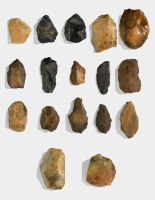
Ancient Stones from the Stone Ages are a collection of ancient stones from the early and middle Stone Ages used by humans of that era for various activities. These stones, crafted and utilized for different functions and in various sizes, have been discovered in multiple locations in the north and west of the Kingdom of Saudi Arabia, specifically in Wadi Masl ash-Shuwayhitiyyah in al-Jawf Province and Wadi Fatimah in Makkah al-Mukarramah Province . History of the ancient stone collection The an...
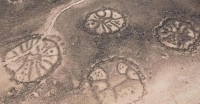
Stone circles in the Kingdom of Saudi Arabia are located along ancient trade routes in various provinces of the Kingdom. Some of them are located in Riyadh Province , along the old trade route, where a large stone circle exists north of the town of Sdoos. The circumference of this circle is as high as the height of a man, featuring a twisted tail forming interconnected triangles along the edge of the plateau. Northeast of Riyadh City , on the trade route from 'Hajr al-Yamamah' to Basr...
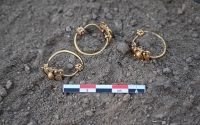
The archaeological jewelry finds in in the Kingdom of Saudi Arabia refer to adornments, necklaces, and amulets discovered in the Kingdom. Some discoveries were extracted from archaeological sites across the Kingdom, including Jawan and Thaj in the Eastern Province . Some of these items are adorned with gemstones, and date back to one hundred years BCE in Thaj, and from the first to the second century CE in Jawan. Raw materials for ancient jewelry The jewelry discovered in the Kingdom was cra...
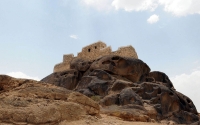
It is located on the top of Raum Mountain, in the southwest of Najran city . It was built at an approximate height of 1000 m using stones and clay, and its roof was made of cedar, tamarisk, and palm wood. It was adorned on the outside with adjacent and individual triangles, in addition to carefully built rock reservoirs at the castle's base, designed to collect rainwater through channels that flowedfrom the castle. Raum Castle was built in 1929 as an observation and exploration point. It r...
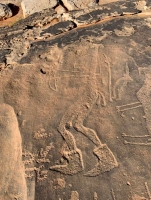
Tayma' hieroglyphic inscription consists of two cartouches (frames) bearing information written about King Ramesses III. This type of inscription is one of the well-known traditions in Ancient Egypt for naming Egypt kings. The hieroglyphic inscription consists of four parts: the coronation title 'Nesu-Bity,' meaning King of Upper and Lower Egypt; the birth name 'Sare Bin Ra,' meaning the sun god; and the name of the king or that of the family, in addition to a descripti...
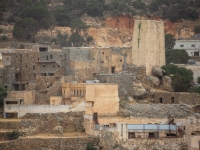
Al Olayan Village is a historic village in an-Namas Governorate , Aseer Province , southwest of the Kingdom of Saudi Arabia. It houses numerous artifacts, archaeological pieces, and preserved documents in a museum located within the village. 1 Touristic significance of Al Olayan Heritage Village Al Olayan Heritage Village is perched on the heights of the Sarawat Mountains . It represents, with its archaeological artifacts and natural surroundings, a tourist attraction in the region. Visitors ca...
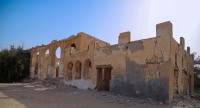
The Historical Fakhriyah Palace, also known as Jalawi Palace, is one of the historical and archaeological buildings in al-Ahsa Governorate in the Eastern Province of the Kingdom of Saudi Arabia. 1 Palace significance Fakhriyah Palace is considered one of the tourist destinations visited by visitors and tourists. It is marked by its entertaining and architectural character, in addition to its social character. 2 ...

Al-Masmak Palace , with al-Masmak meaning a thick and fortified building, was constructed in 1865 during the reign of Imam Abdullah Bin Faisal Bin Turki . It was designed with high walls, lacking windows and openings except for two entrances and small openings for rifle barrels. One of the uses of this palace was as a storage facility for ammunition and weapons until it was decided to convert it into a historical landmark and later into a museum in 1995. The palace contains: the main wooden gat...